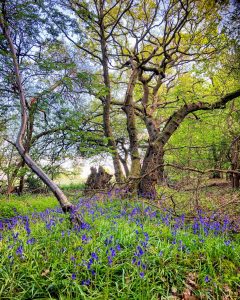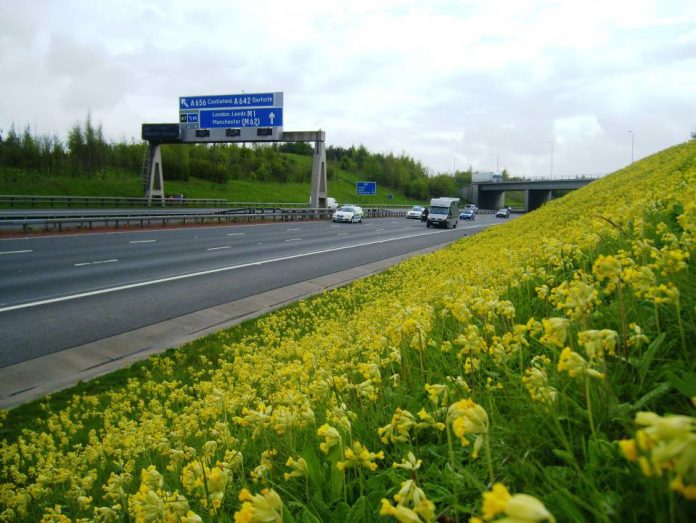The Conservation Hierarchy is a new framework developed by the University of Oxford to help construction projects achieve Biodiversity Net Gain, improving infrastructure while protecting and enhancing the natural environment. Hollie Booth, Henry Grub and Professor EJ Milner-Gulland from the University of Oxford and Julia Baker from Balfour Beatty major projects explain
Managing impacts on nature is part and parcel of infrastructure development. If you get it right during construction, it can save time and costs, improve relations with statutory agencies and neighbouring communities, add value to the development itself and provide vital evidence to win further work. If you get it wrong, it can cost the project and your business.
The new government has promised to invest £100bn in public infrastructure over the next five years. These projects include road and rail transport, social housing, energy, flood defence and communications infrastructure. While these projects aim to boost the UK’s economy and improve our quality of life, they could have devastating consequences for the natural environment.
So how do we build and improve infrastructure, while protecting nature? A new approach — Biodiversity Net Gain — looks to be the solution.
What is Biodiversity Net Gain?
 The concept of Biodiversity Net Gain is simple. It’s development that leaves biodiversity in a measurably better state than before. How we get there is challenging, yet certainly doable. It’s a change from the old “infrastructure versus nature” approach to one where infrastructure is designed, built and maintained in ways that benefit our environment.
The concept of Biodiversity Net Gain is simple. It’s development that leaves biodiversity in a measurably better state than before. How we get there is challenging, yet certainly doable. It’s a change from the old “infrastructure versus nature” approach to one where infrastructure is designed, built and maintained in ways that benefit our environment.
To help address this challenge, in 2016, industry’s leading environmental institutes published good practice principles for Biodiversity Net Gain.
These principles provide a framework for industry to follow and are founded on an approach called the Mitigation Hierarchy. Here, Biodiversity Net Gain is achieved by first avoiding and then minimising biodiversity loss, before remediating and finally offsetting residual losses to generate net gains.
In 2019, practical guidance for implementing the principles was published. By this stage, major industry players had made voluntary commitments to Biodiversity Net Gain. These include Highways England, housing developers like Berkeley Group and Barratt Homes, and water companies such as South West Water. Several local planning authorities also stipulate Biodiversity Net Gain, such as Warwickshire.
Then government caught up. In 2019, it published the Environment Bill’s policy statement, setting out its aspiration for a mandatory approach to Biodiversity Net Gain for development in England. Also that year, Natural England issued its Biodiversity Metric for measuring losses and gains in biodiversity from development.
How can the construction industry achieve Biodiversity Net Gain?
Most decisions about a project have already been made when it reaches construction. It’s then hard to introduce something like Biodiversity Net Gain, as it’s too late and any changes will be costly. But more and more, contractors are involved during the early stages of a project so that clients benefit from their expertise, especially on what’s feasible to build and where, in order to enable Biodiversity Net Gain to occur.
Also, when a contract is for Design-and-Build, contractors are integral to decision-making. So the construction industry has a key role in Biodiversity Net Gain. Furthermore, a new approach – called the Conservation Hierarchy – can help them to achieve it.
The Conservation Hierarchy is a set of clear, practical steps to guide decisions to achieve Biodiversity Net Gain. It goes beyond the Mitigation Hierarchy by taking a proactive, rather than reactive, approach.
Because the Conservation Hierarchy focuses on being proactive, it’s particularly useful to enable the construction industry to capture all of the extra activities that projects undertake to benefit the environment, such as undertaking tree planting days with local schools, supporting local wildlife groups, hosting environmental apprenticeships and STEM activities. These are called Proactive Conservation Actions.
The Conservation Hierarchy has the same four steps of the Mitigation Hierarchy, but alongside these are Proactive Conservation Actions. These actions can be strategic, such as part of a company’s sustainability strategy, or they can be led by the construction team on site. Either way, it’s through those extra activities that contractors can go above and beyond to enhance the environment.
The steps of the Conservation Hierarchy and examples during construction can be seen in Table 1.
“Biodiversity Net Gain is an exciting step forward for industry. While great work is being undertaken, the focus tends to be on metrics, whereas the Conservation Hierarchy enables us to showcase everything we do in construction that benefits the environment.
Even the smallest measure can help, and the Conservation Hierarchy is a practical framework to guide our actions for the greatest benefits,” says Julia Baker, biodiversity technical specialist for Balfour Beatty major projects and a visiting researcher at Oxford’s Interdisciplinary Centre for Conservation Science.
Case studies
The Greater West Programme
A great example of how a construction project can achieve Biodiversity Net Gain is Network Rail’s Greater West Programme. The programme measured the amount of biodiversity lost line-side during works and set a target to achieve Biodiversity Net Gain by working with local stakeholders. Its proactive approach to collaboration not only achieved Biodiversity Net Gain for the programme, but also generated far-reaching, long-term benefits for numerous local groups all along the railway line.
Emmanuel Deschamps, environment manager at Network Rail, said: “As a result of our programme’s commitment to minimise biodiversity loss within the railway landscape and leave a long-lasting legacy for nature and communities, we have funded 25 biodiversity projects across Berkshire, Oxfordshire, Wiltshire, the West of England and South Wales. This represents 120ha of woodland restoration and 60ha of woodland creation, as well as elements of ponds restoration, wildflower meadow creation and grassland preservation.”
What is biodiversity and how can we measure it?
Biodiversity is the variety of life. It includes plants, animals, fungi and microorganisms, as well as the communities they form and the habitats in which they live. Biodiversity is essential for people, as it provides vital services such as carbon storage, clean air and water, and underpins our health and wellbeing.
Biodiversity metrics enable us to measure losses and gains in biodiversity from development in order to provide an overall net gain. But biodiversity cannot be reduced to a single number. So designing and building Biodiversity Net Gain is about using a metric in combination with qualitative assessments that capture all ecological features and the functionality of a site.
The University of Oxford
The University of Oxford is applying the Conservation Hierarchy to improve management of its estate. It is mapping habitats on the estate to create a “natural inventory”. This will then be used to set targets on high-value natural areas for developments to avoid, on areas where developments seeking Biodiversity Net Gain can enhance nature, and on Proactive Conservation Actions such as training students to monitor wildlife on the campus, reducing the environmental impact of the university’s canteens and running awareness-raising campaigns.
If you are interested in Biodiversity Net Gain and the Conservation Hierarchy, please visit www.conservationhierarchy.org or contact us on info@conservationhierarchy.org.
Hollie Booth
Technical coordinator
Conservation Hierarchy
Henry Grub
Lead researcher
The Oxford Partnership for Operationalising the Conservation Hierarchy
Professor EJ Milner-Gulland
Programme lead
Conservation Hierarchy
Tel: +44 (0)1865 271260
ej.milner-gulland@zoo.ox.ac.uk
Julia Baker
Biodiversity technical specialist
Balfour Beatty major projects
Tel: +44 (0)20 7216 6800
julia.baker2@balfourbeatty.com

















